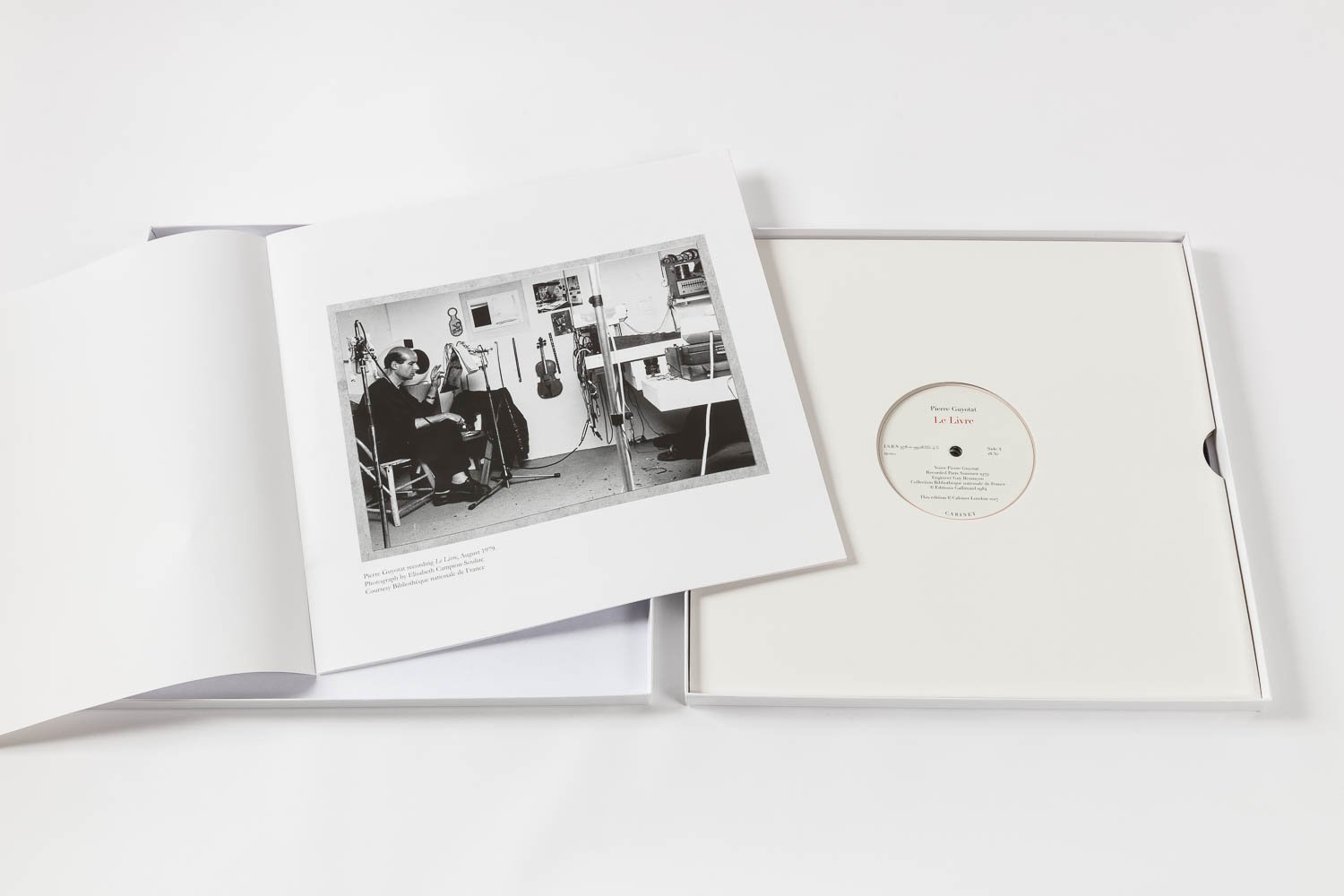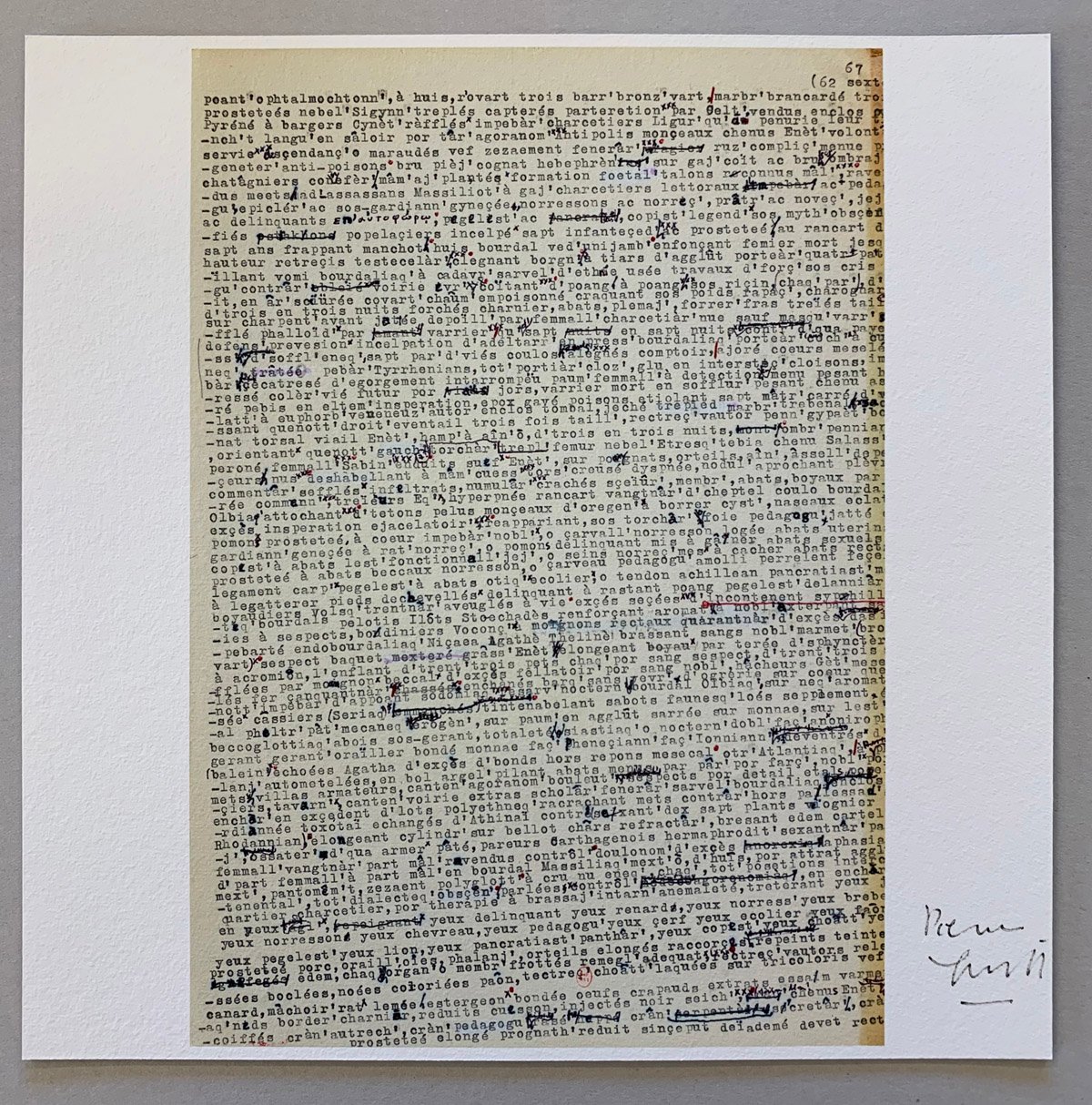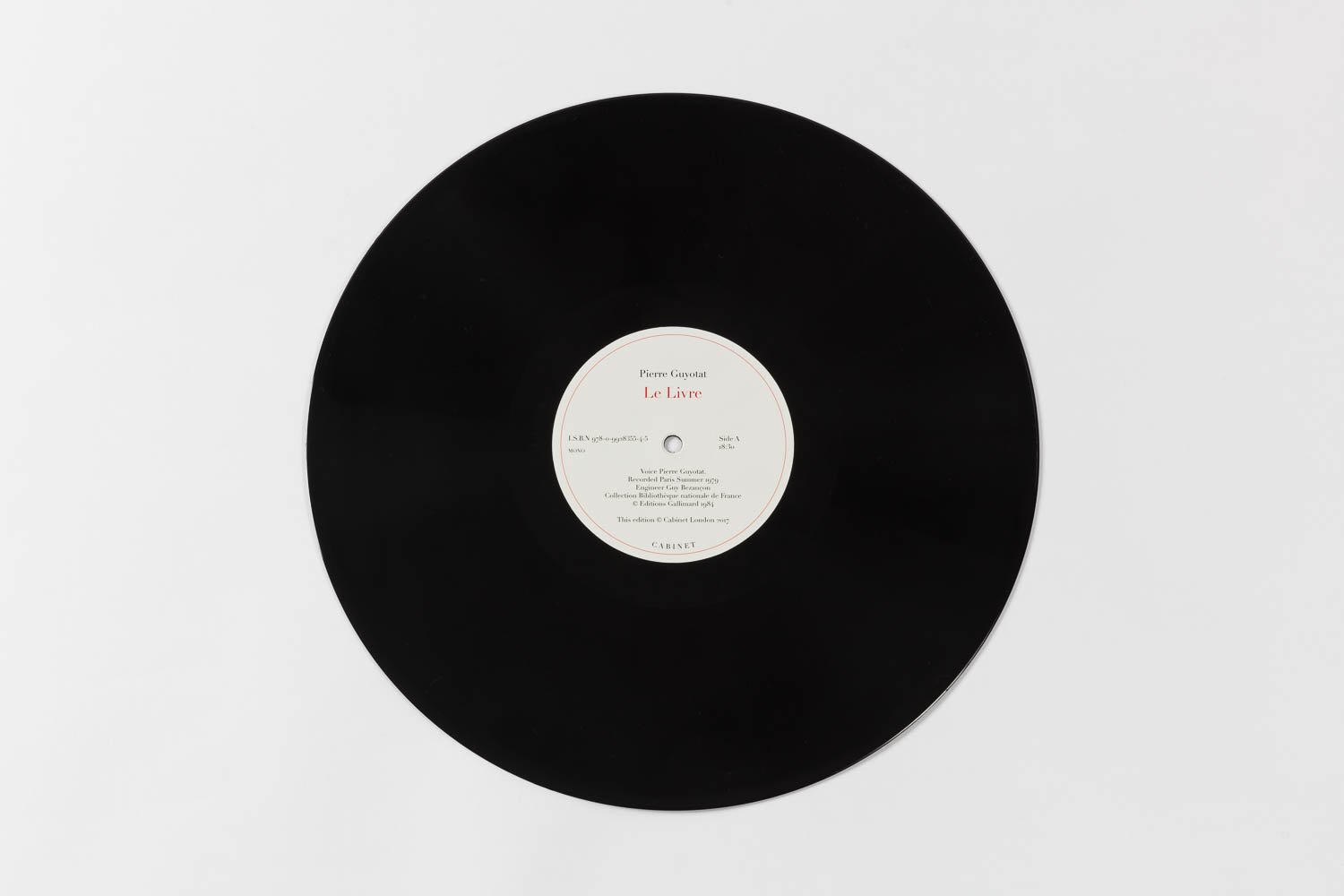Eden, Eden, Eden at 50
Association Pierre Guyotat
Readings by Paul Buck & Martin McGeown
8 September, 11.30pm, reading through midnight 9 September 2020, 12.15am
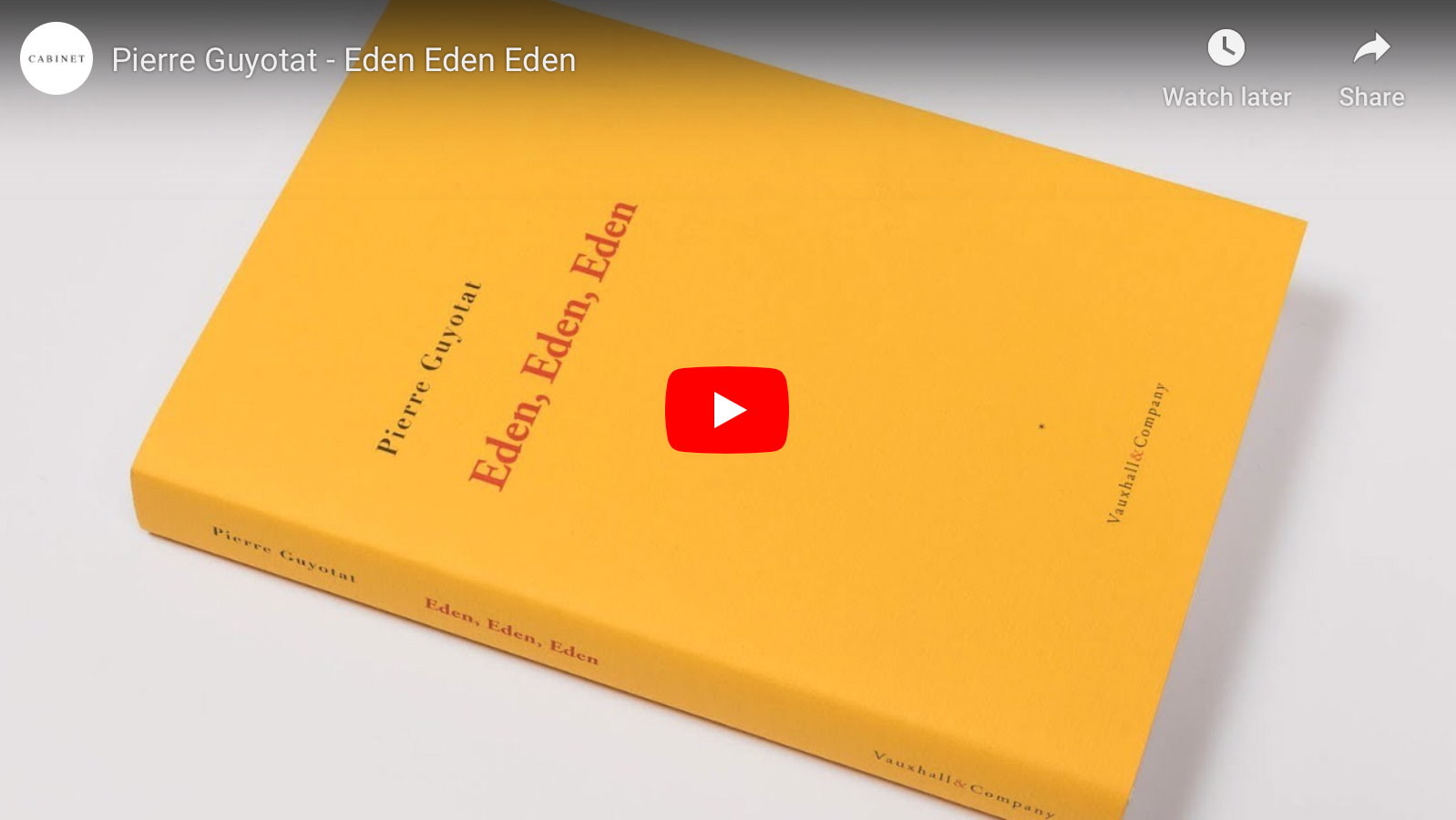
L’Association Pierre Guyotat
L’Association Pierre Guyotat, voulue par l’auteur, a vocation à rassembler les ressources et soutenir les lectures, interprétations, et traductions d’une œuvre dont les enjeux sont centraux pour le présent, ainsi qu’à accompagner les créations artistiques nourries par cette œuvre.
Son bureau est composé de Donatien Grau, président de l’Association Pierre Guyotat ; Marianne Alphant, Catherine Brun, Thierry Grillet, vice-présidents ; Emmanuel Pierrat, secrétaire général ; Pierre Chopinaud, trésorier ; Guillaume Fau et Régis Guyotat, membres de droit ; Claire Amchin- Ollivier, Stephen Barber, Peter Behrman de Sinéty, membres fondateurs.
Elle est accompagnée d’un comité d’honneur (parmi ses membres : Abd Al Malik, Laure Adler, Jean- Jacques Aillagon, Hubert Blanc, Bernard Blistène, Patrick Bouchain, Patrick Boucheron, Bernard Cerquiglini, Bernard Comment, Albert Dichy, Pascal Dusapin, Laurence Engel, Colette Fellous, Antoine Gallimard, Isabelle Gallimard, Jacques Henric, Colette Kerber, Georges Kiejman, Jack Lang, Linda Lê, Sylvère Lotringer, Paul McCarthy, Frank Madlener, Martin McGeown, Bernardo Montet, Chiara Parisi, Bruno Racine, Philippe Roger, Éric Rondepierre, Lydie Salvayre, Tiphaine Samoyault, Michel Surya, Christoph von Weyhe, Edmund White).
Le 9 septembre 2020, pour célébrer le cinquantième anniversaire jour pour jour de la parution d’Éden, Éden, Éden, et marquer sa propre naissance, l’Association Pierre Guyotat a conçu et coordonné avec des partenaires de premier plan un programme de cinquante lectures en France et dans le monde.
Contact : associationpierreguyotat@gmail.com
The question of celebrating the fiftieth anniversary of the publication was considered during the last months of Pierre Guyotat's life. Taking inspiration from the fifty years of Tombeau pour cinq cent mille soldats, in 2017, which gave rise to live hours of readings in French, English, German, Japanese and Russian, the Association Pierre Guyotat, established by the author for the conservation of his work will celebrate the fiftieth anniversary of Eden, Eden, Eden on September 9th, by organizing fifty readings in fifty different places in France, and around the world.
Each reading will be different. Each venue will consider a precise meaning within the work, life and world of Pierre Guyotat, and it will create their own reading, according to their own means for its audience, attending physically or online. Private and public partners, artists, authors, and admirers will join together to manifest the life of this great visionary text. The readings will take place in French, in the languages of existing translations (English. German, Spanish, Dutch, Japanese, Russian...) or provide an opportunity for new translations (Arabic, I lebrew, Italian...). They might be the result of an individual or a collective effort, and each one will be unique, conceived by, and for, each specific venue.
The reading at CABINET will commence at 11.30pm on 8th September and will finish shortly after midnight on 9th September.
Since its release with legendary publishing house Gallimard on September 9th, 1970, Eden, Eden, Eden, the work of Pierre Guyotat, a young author then in his thirties, has provoked scandals, fascinations, and marvels. Deemed a “Saharian fiction”, it was published with forewords by Michel Leiris. Roland Barthes, Philippe Sollcrs, and was instantly praised by Michel Foucault; upon being censored, it gained immediate international support by the likes of Joseph Beuys, Pier Paolo Pasolini, Pierre Boulez, Italo Calvino, Jean-Paul Sartre... It is a legendary work.
Fifty years later, the work of Pierre Guyotat - who passed away on February 7th of this year - exerts an ever-growing impact, having proven to be prescient of a world on the verge of transformation, through violence, sexuality, decolonization, cosmology. It’s the endpoint of colonialism as well as the starting point of a new history, for language, offering a new vision of the present, the past, and the future.
Pierre Guyotat (January 9th, 1940, Bourg-Argental – February 7th, 2020, Paris) is the author of one of the most radical oeuvres of the late 20th and early 21st centuries. An early critic of colonial oppression and oppression of all kinds, he has played a major role in the opening-up of culture, sexuality, and art by developing the most extreme form of epic fiction. His texts, starting with Tomb for Five Hundred Thousand Soldiers (first released in 1967) and Eden, Eden, Eden (first released and immediately censored in 1970, with forewords by Roland Barthes, Michel Leiris, Philippe Sollers, and immediate praise by Michel Foucault) have changed the fabric of French language. His work has been widely translated, in languages such Italian, Japanese, Russian, German, English, Dutch, Spanish... Idiocy, his last published new book (2018), won the Prix Médicis, the Prix de la langue française, and the Prix special of the jury Fémina (American, Chinese, Spanish, German translations forthcoming). His archive is held at the Bibliothèque nationale de France, France’s Public Library. His drawings have been exhibited in the most prestigious museums and galleries in Paris, Berlin, London, Rome, New York, Los Angeles, Brussels and will be featured in Manifesta in the Fall 2020.
Originally published under the title
Éden, Éden, Éden
Éditions Gallimard, 1970
Copyright © Éditions Gallimard, 1970
This edition Copyright © Vauxhall&Company 2017
Translation copyright © Graham Fox, 1995 & 2017
Vauxhall&Company Series Editors Paul Buck & Catherine Petit
A hand-annotated limited edition by Pierre Guyotat is also available, priced at £350 GBP. Further details are available on request from Cabinet Gallery (art@cabinet.uk.com).
First published in France in 1970, immediately greeted by both furore and acclaim, today Eden, Eden, Eden is recognised as one of the major works of the last century.
This edition is a much-revised translation of the out of print English version originally published in 1995. It also includes new translations of the original prefaces by Michel Leiris, Roland Barthes and Philippe Sollers, plus a postface by Paul Buck.
"Brought forth in an egalitarian way, or almost, beings and things are offered here for nothing more than what they are in the strict reality of their physical presence, animated or not: humans, animals, clothes and other utensils thrown in a mêlée in a way close to panic, that evokes the myth of eden because it obviously has for stage a world without morals or hierarchy, where desire is the rule and nothing can be declared precious or repugnant.
An implicit poetry that is sometimes replaced by an explicit poetry: those moments when, above the magma only disturbed by the quest for fulfilment led by each protagonist, human words appear, all the more moving for they seem to emerge – as if by miracle – from a layer of existence in which all words have been abolished."
from the preface by Michel Leiris
"To stretch the powers of one single sentence to the material, divided teeming carried forth through an unrelenting drive. Organic and celestial mechanics, biological, chemical, physical, astronomic. “The natural science will later subsume the human science as the human science will subsume the natural science: There will be one science” (Marx). On the very first page of Eden, Eden, Eden, see that inconceivable theatre: flint, thorns, sweat, oil, barley, wheat, brain, flowers, ears of wheat, blood, saliva, excrement... See the golden space of matters and bodies, endlessly transmutable, rhythmic."
from the preface by Philippe Sollers
In 1979 Pierre Guyotat decided to make a recording of his recently completed but still unpublished text Le Livre. 150 hours of studio time was taken up during the course of that summer to arrive at this final recording. It would be another five years before Gallimard published Le Livre.
Guyotat has stated: “I am aware that what I do in Le Livre cannot be readily understood without my speaking the text, pronouncing it publicly. How much time then must I wait until this work is really read and understood as an object to be read with the eyes? This material I produce is strange even to me, actually, because there are really no criteria to measure it with, especially as it cannot be categorised as literature.”
PREFACE
1975-1977. Under the title E.P.Q. (Encore Plus Que…), with Prostitution echoing in my ears, I work on an entirely vocal series of long sequences about brothels and auctions, a few fragments of which appear here and there.
Summer 1977. Simultaneous to my decision never to publish again and the reinforcement of my refusal to be designated a “writer”, these voices disappear into what I no longer name writing but matter. Their voices being silenced, keeping them in a reduced space of enslavement, the prostituted bodies are scattered in the basements of History, there to contaminate it.
For these bodies, from now on mute and anonymous, I construct quick biographies and genealogies.
From the beginning of this genealogical movement, more or less instantaneously, I have the vision that I just entered not another book, but The Book, to which my entire life, whose brevity I decide at that same moment, will be devoted, and that its trajectory will be that of a going back through Time from the immediate post-war era to the first “prehistoric” prostitutable male.
Here is my great plan, whose premises can be located in most of my previous writings.
Beneath the forward thrust of the greatest possible quantity of bodies, lots of bodies enslaved, deported from one end to the other of familiar lands and Time, to revive the greatest possible quantity of Elements, peoples, fauna, flora, inclement weather, transport, currency, habitats, public roads, food, medicines, clothes, utensils, finery, philtres, tools, instruments for war, slavery and music, sepulchres, trades, functions, profane and sacred hierarchies, laws, entertainments, tortures, lexicons, arts, sciences, liturgies and incarnations of the divine, even the “purest” whole – from the shooting star to the starfish, from baby puree to Christ’s saliva, from the decree on emancipation to the Tables of the Law, from Kepler’s pages to Antigone’s tablets – that whole hopelessly infected in the Great Prostitutional Pandemic.
At the heart of this great plan, a blasphemous necessity: that the main places where those deported bodies are prostituted are adjoining open and closed sites where, in History, the Spirit has blown the strongest, and that the flesh and matters and the material of prostitution connect to exchange with those of the secret science, the censured mystics and the tortured heresy. For example, that the Veil of Veronica used to wipe Christ’s face had been borrowed from a brothel on the Via Dolorosa.
This inverted chronological order demands that the fiction advances by going backwards. The meaning overturns the Meaning. For gradually the genealogical system of going back in Time is regularly replaced by the servile, prostituted fantasy, most often childish, that generates the myth, which pushes back the limits of Time and Space; through utopia – the reversal, to the smallest detail, of the slave order (sequences, sessions of de-prostitutionalisation) – whose destruction scatters the waste not into the future but into the ancestral past.
In the tumult of deportations, all these genealogies intersect, fecundate, mutilate and extinguish one another. The speed of deportation is such that no lots of auctioned bodies, always odd numbered, that feed the genealogical Mouth can be treated in its entirety.
Male or female, the ancestor or the prepubescent or the baby suckling, I exalt him for the time of his biography – ethnic birth, abduction, transaction, sold again in faraway lands for sexual servitude, private or prostitutional – where I make him disappear one time in the biography of his servile escort, another time escape into the loving companionship of some ferocious beast, itself marked with scars, odd numbered also, from its biography, free (inter-tropical migrations following the advance of the desert), servile (capture, put in cages, transhipment, exhibition in ports with the human lots, confrontations in arenas, escapes, escapes) sometimes to die, in dreams mostly, of human death (torture, epidemic, genocide), or non-human (assumption in the ancestral myth of the ethnic group), gravediggers, executioners, animal, human and divine agents of the myth, immediately caught in biographies, each carried away to the initial place and time of its procreation.
On two occasions (the sign: three slanted bars), against my wish to proceed with historical phases spaced at regular intervals, this race towards slavery’s divine infinite is submitted to an irreversible acceleration. First: from a naïve fresco representing, but in a prostitutional theological circulation, The Creation of the World, The Last Judgment, The First Christians, The Great Saints and Dogmas, The Emperors and Martyrs, and, painted as a sacred whorehouse in the Ethiopia of the end of the 19th century, an executioner, his duty accomplished, his instruments put away, stands out, and calmly, outside the Coliseum, outside painting, on the way to his Roman lodging of the middle of the 3rd century AD, disappears among the clientele of a brothel on the Via Tiburtina, Suburra, where, sitting on an original Urbs’ milliary border stone, the naked body of a vandal adolescent prostitute, waiting for him with a firm member, disseminates in the written matter a new blood, the ancient barbarian, re-rooting the genealogy, and, with the power of his ephemeral sexual influence, spreads light, colour, on the quasi-totality of the Roman territory and the farthest limits – Asia, India, Hyperborea – of the mercantile, scientific and religious curiosity of the Empire.
Second: from a lot of seven copies representative of the main phases of the Greek male statuary serving as models for exercises for the pupils of an open-air school of high-class prostitutional deportment, in some sub-desert valley of post-Alexandrian middle Asia, the epic influx reawakens originals and successive models as far as the remote parts of ancient Greece. Here too, the male prostitute, exclusive model of the sculptor and his servile helpers (then, immediate biographical mishap) because his flesh, his spirit and his immortal soul that is enslaved too, circulate, in total or in detail, between the quick hands of the ravisher, the transporter, the dealer, the pimp, and the local divinities of Death, scatters and precipitates the inverted prophetic action.
Summer 1979. The scene unfolds in Zion, 5th century BC, during the night. Nehemiah, the emissary of the occupying Persian king, walks among the ruins of the Walls he is commissioned to restore.
The Book stops here. Lacking the material means to carry on, notes for seven centuries already prepared, I abandon it unfinished, as it is printed here.
God remains owner of man for all eternity. Under this terror, a work of art cannot be improvised. Its laws are those of revolt (a tenacious impropriety: epididymis) and resistance: rhythms calculated down to the syllable, organisation and volume of sound signals.
September 1983.
Pierre Guyotat
Preface to Le Livre
© Éditions Gallimard, 1984
Translation © Paul Buck & Catherine Petit 2017
Box set of three 12” vinyl recordings. Edition of 200, numbered.
Booklet accompanying the vinyl box set.
Signed and numbered lithographic facsimile of one page from the manuscript of Le Livre. Included with edition of 25, signed and numbered.
This is the first time these recordings have been commercially released. This edition is limited to 200. A further 25 with silk screened covers and containing a facsimile of a manuscript page from Le Livre, signed and numbered by the author, has also been published.
Pierre Guyotat
Le Livre
Box set of three 12” vinyl recordings. Silk screened cover. Includes a signed and numbered lithographic facsimile of one page from the manuscript of Le Livre. Accompanied by a booklet of texts, translations, and photographic illustrations.
Edition of 25, individually signed and numbered
£1,200.00 GBP

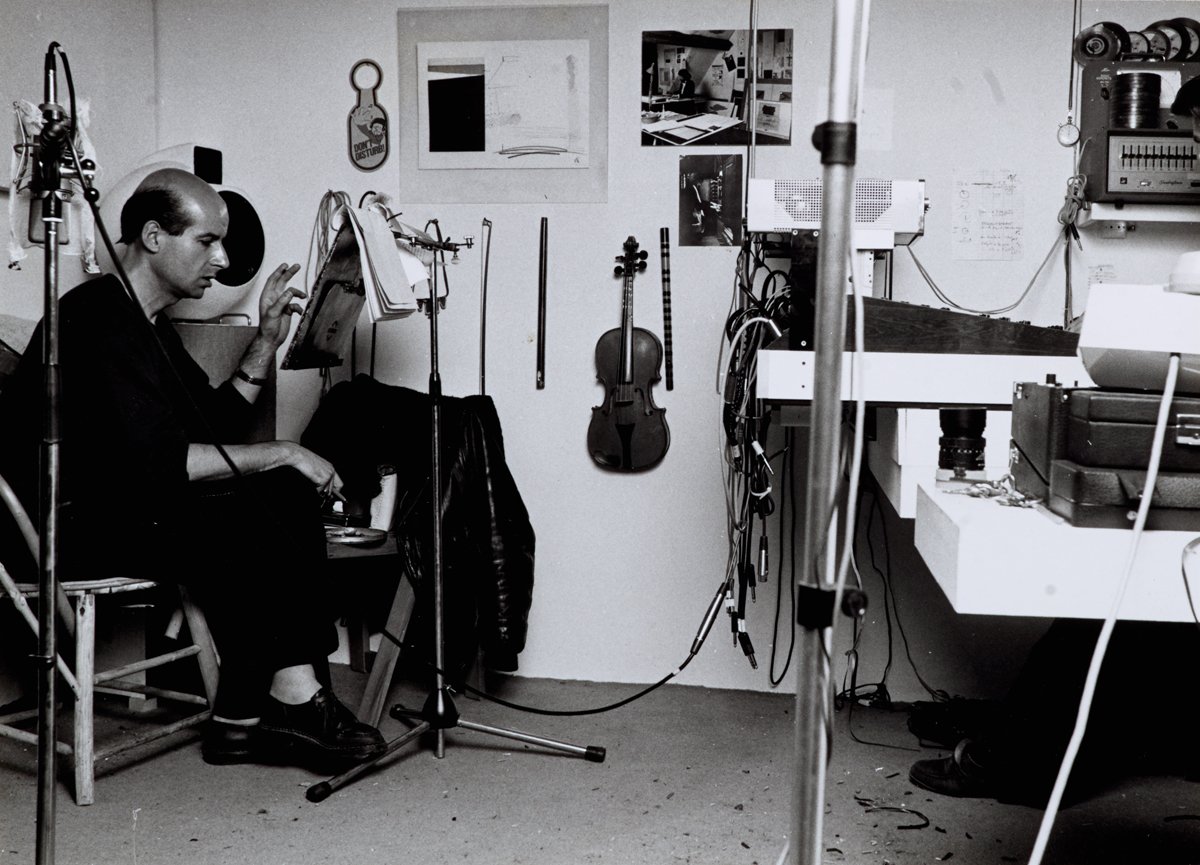
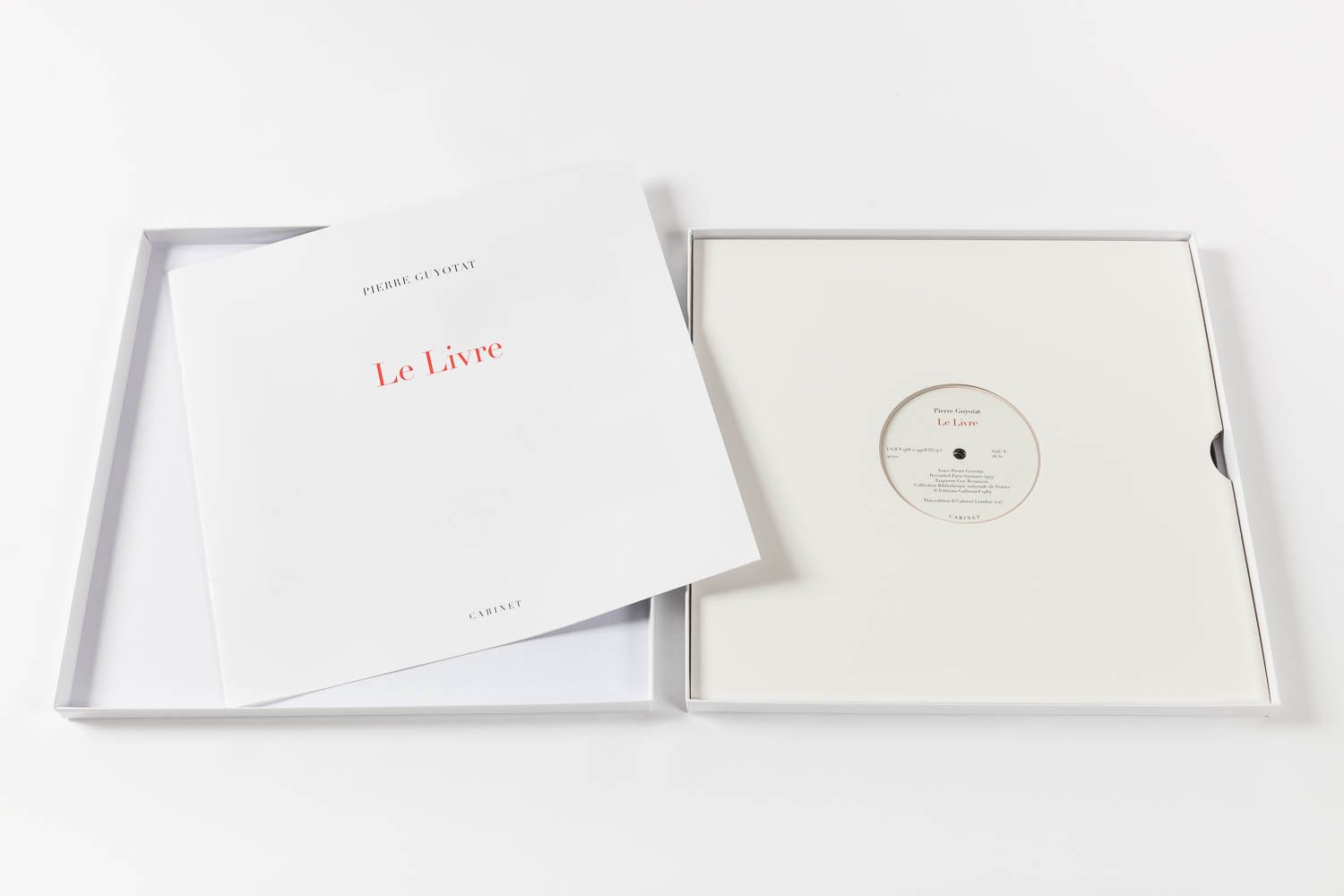
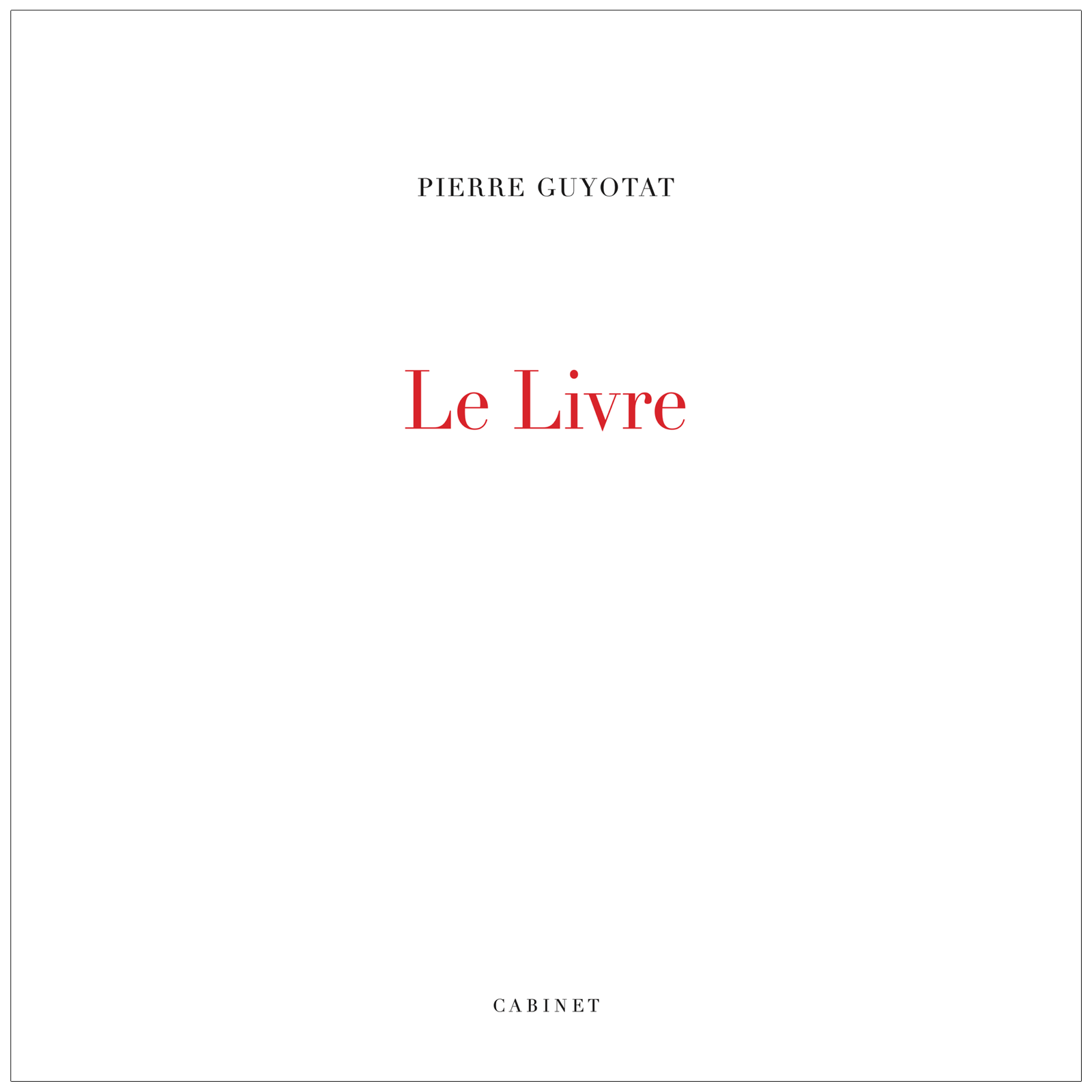
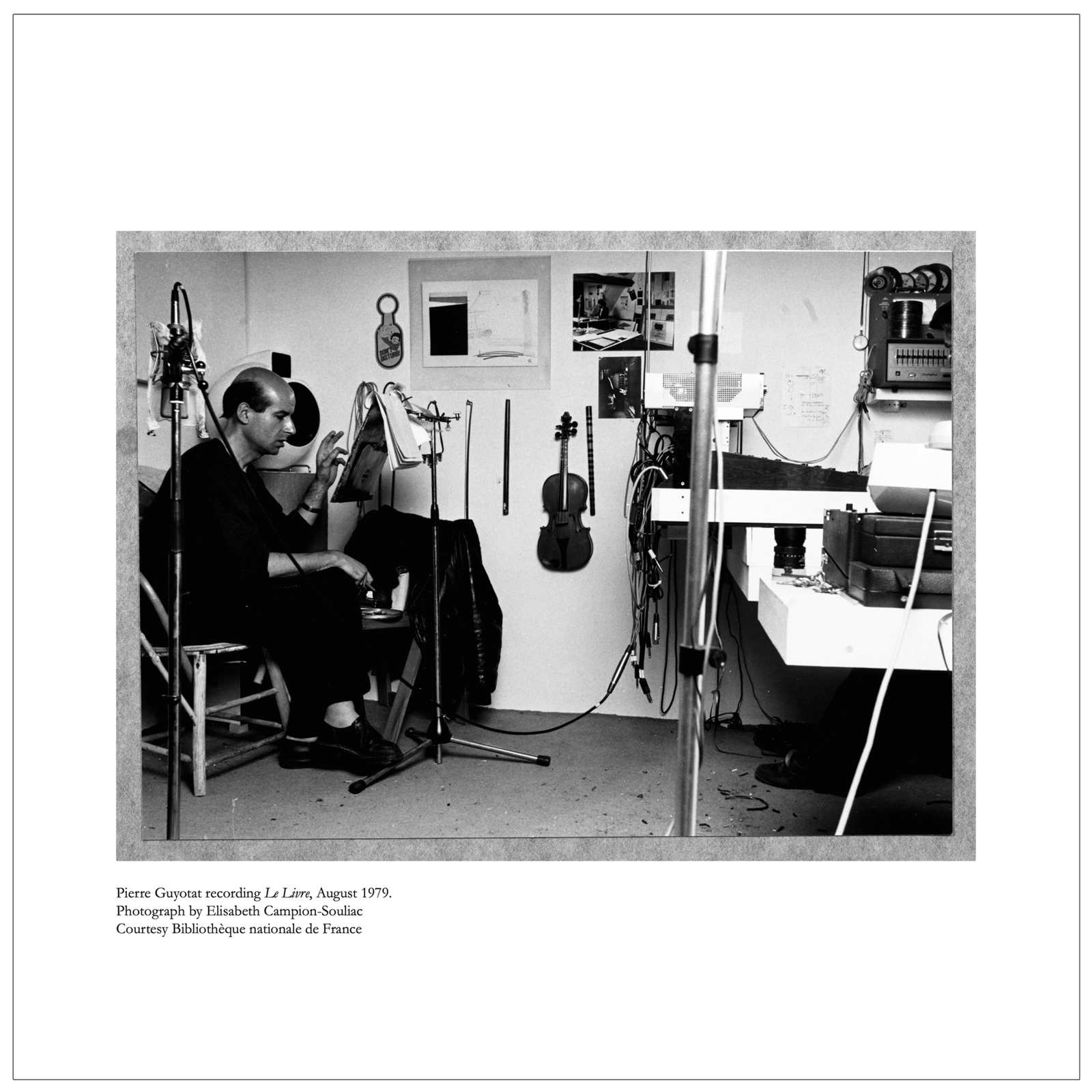
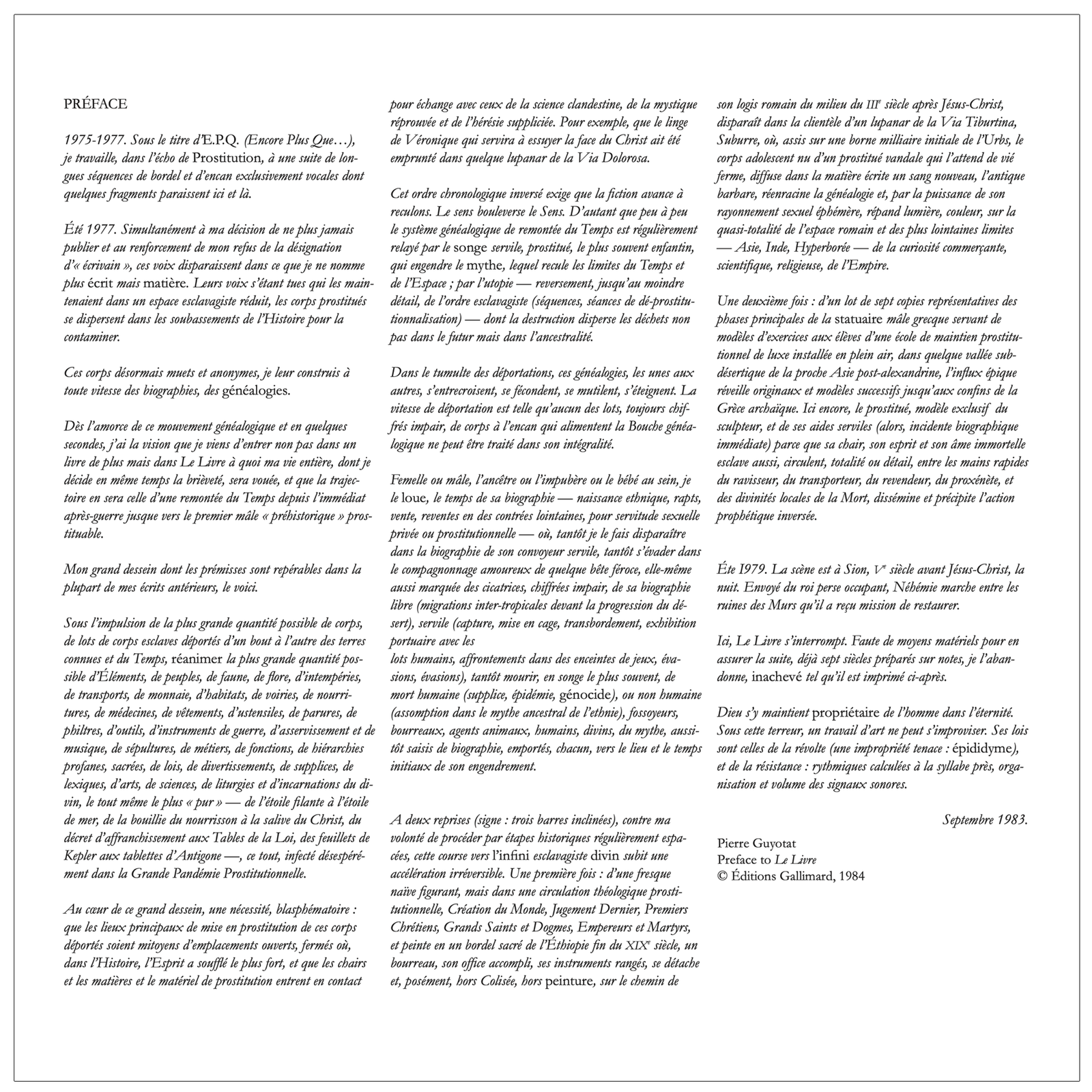
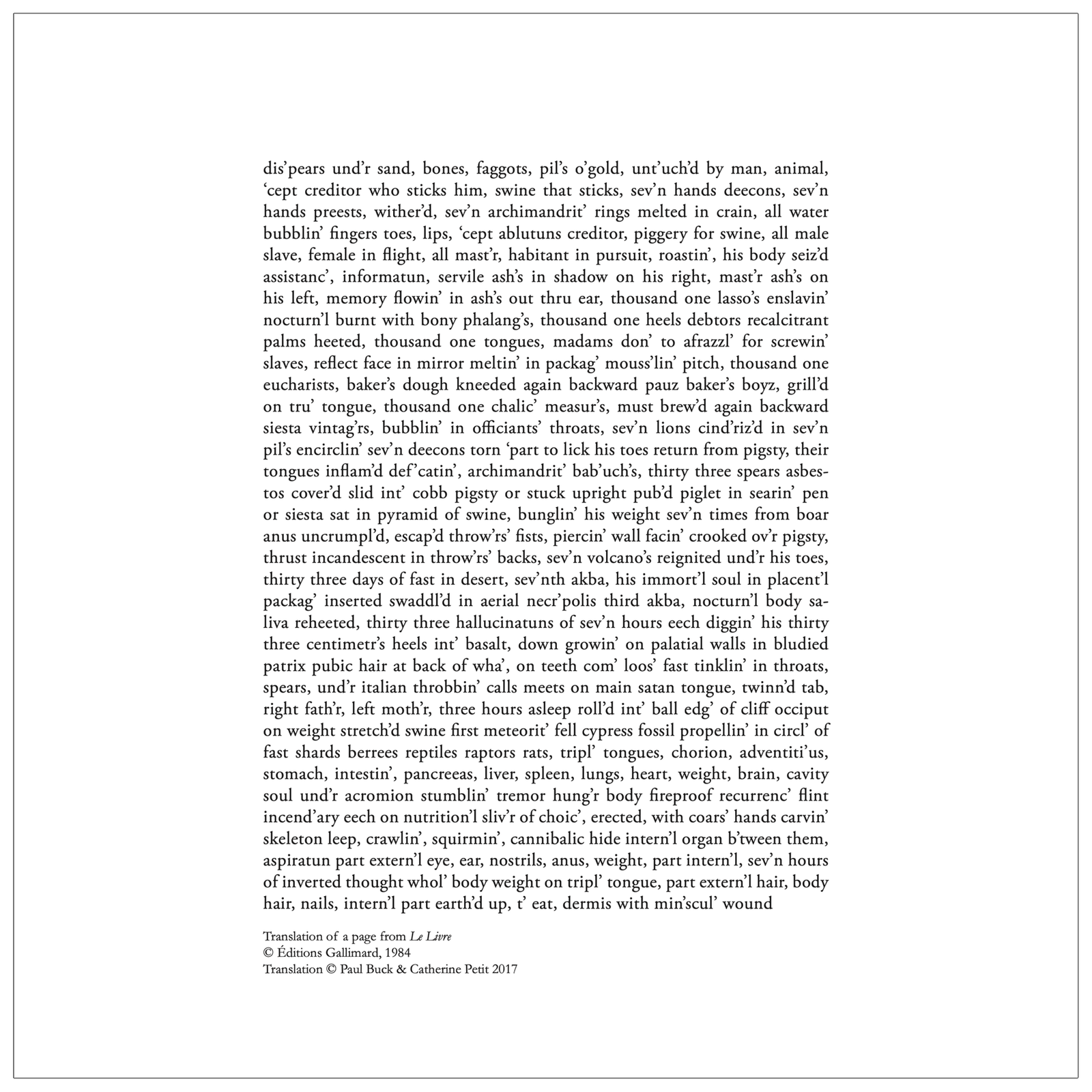
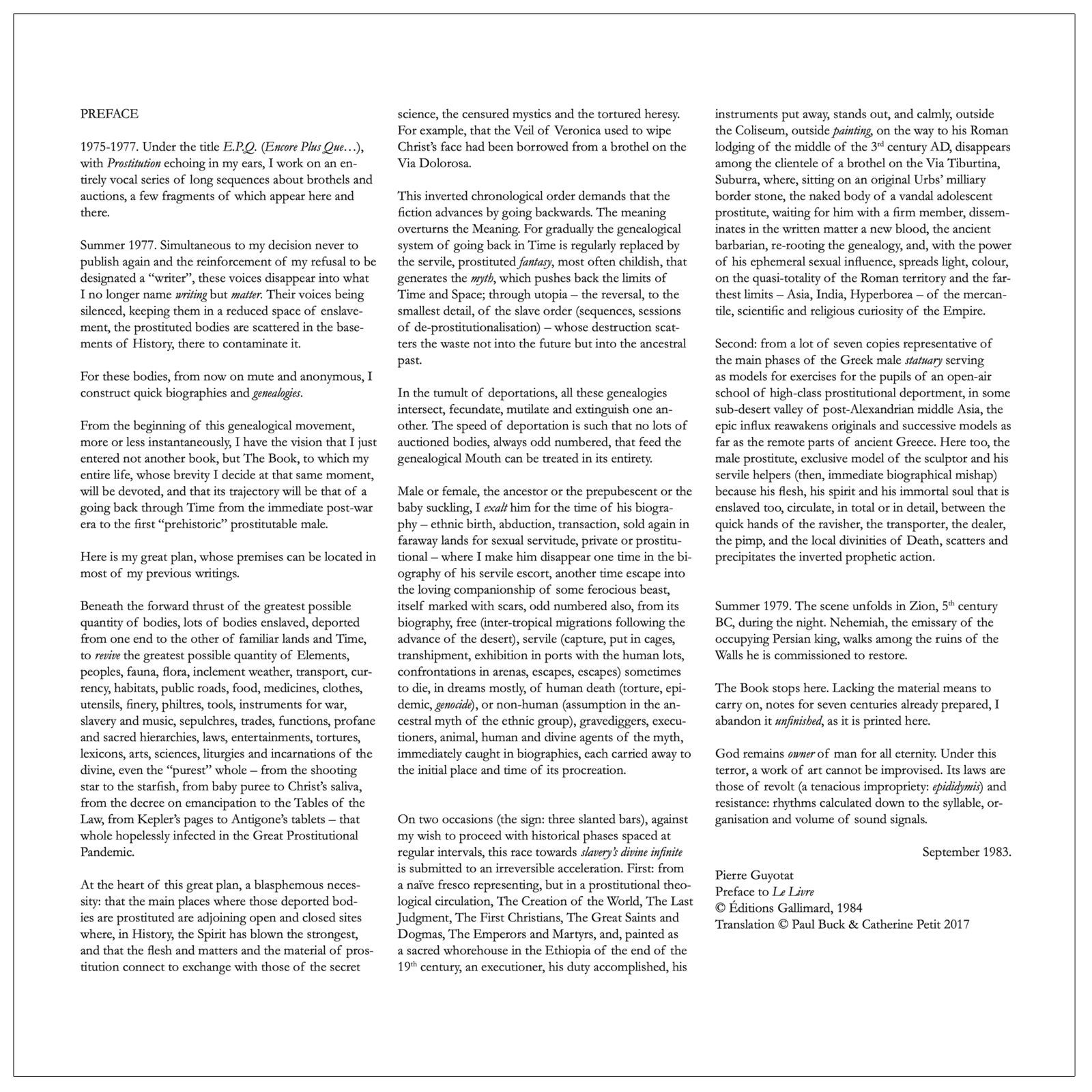
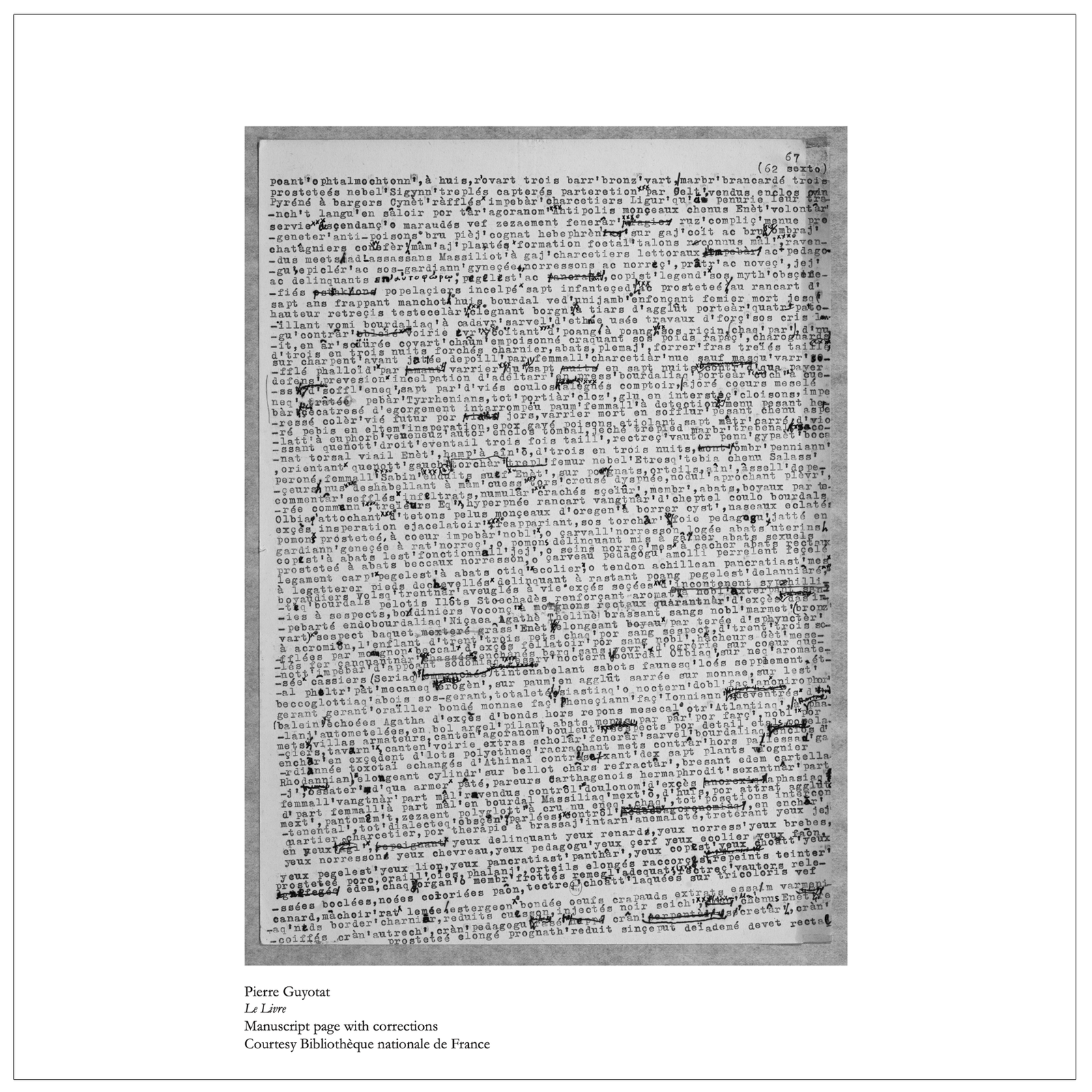
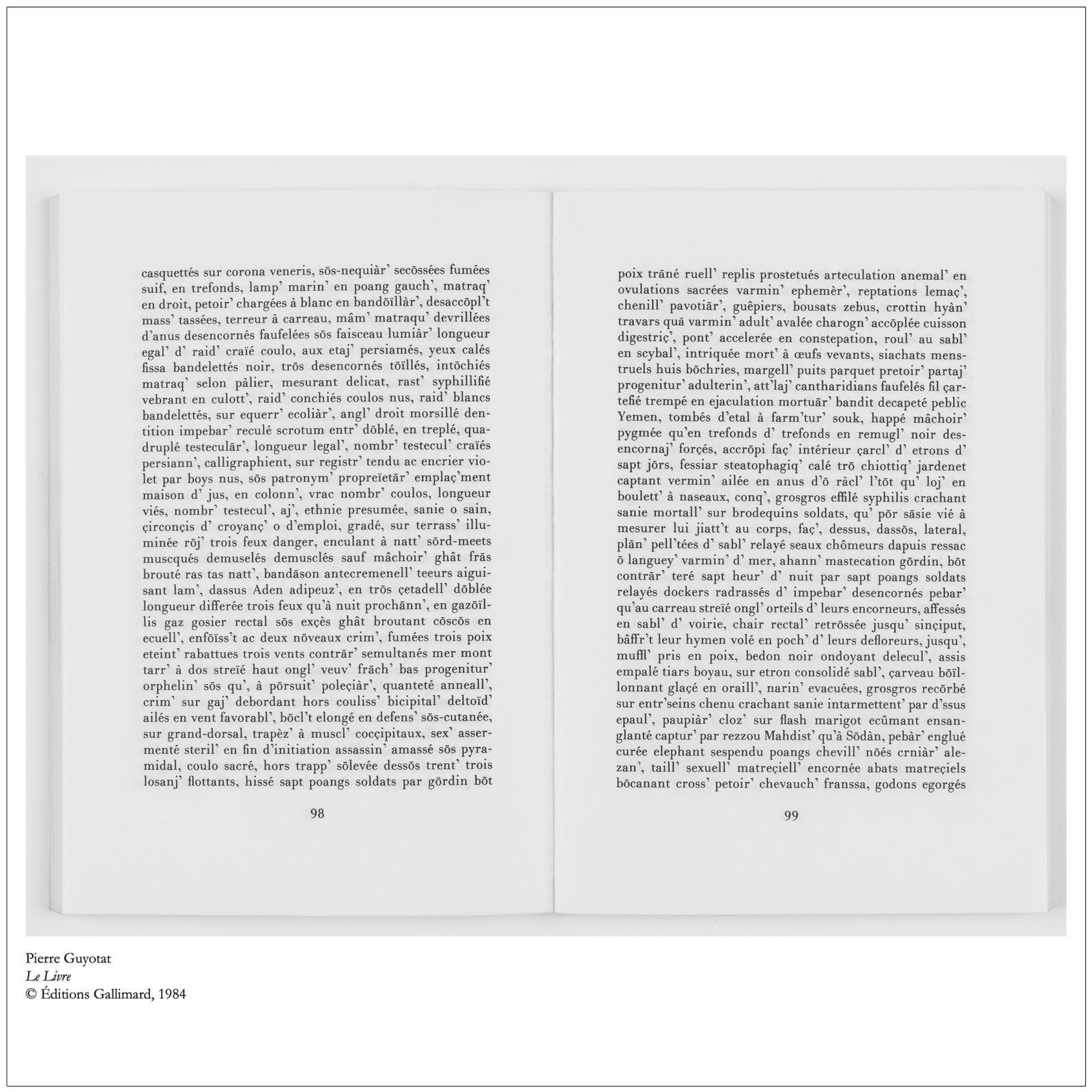
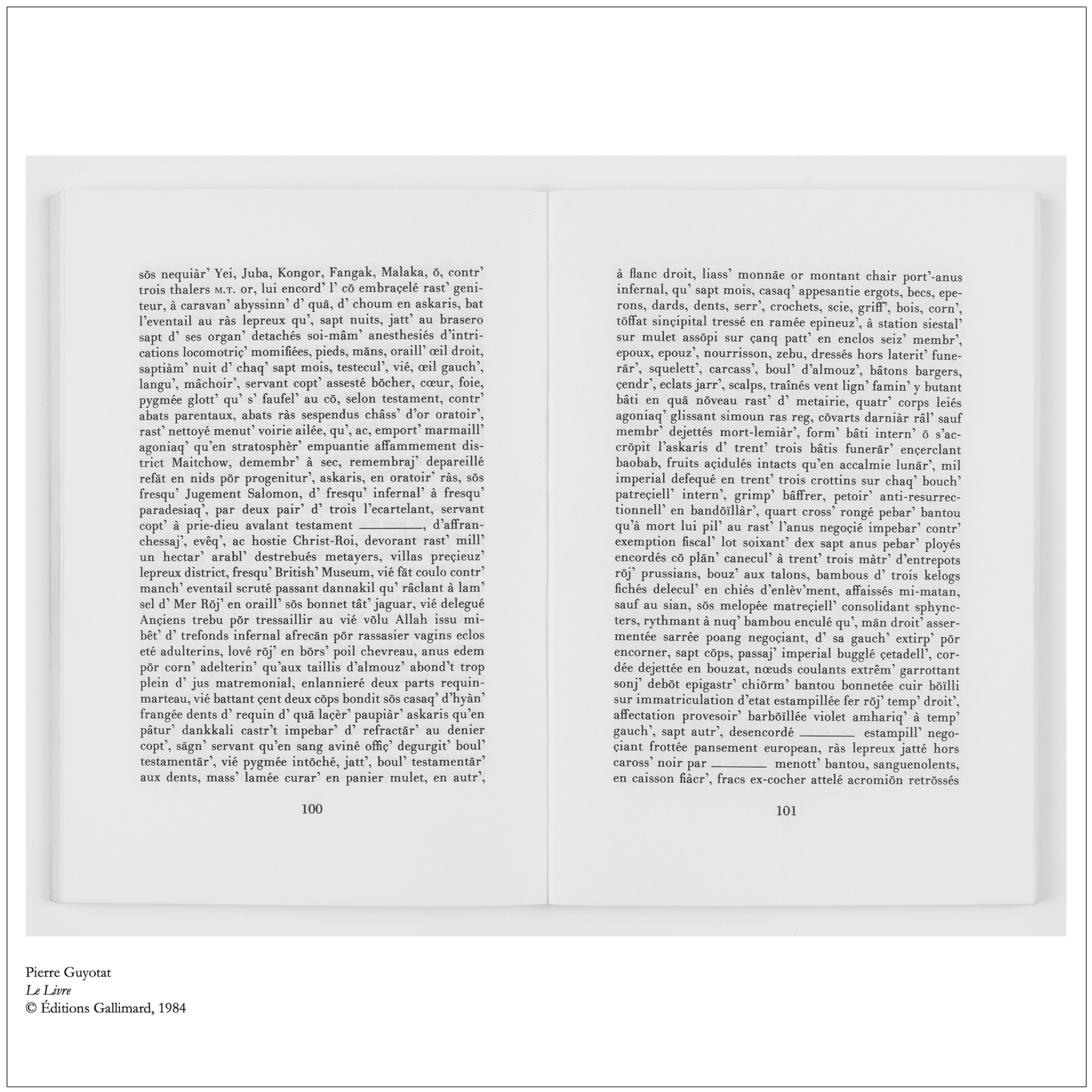
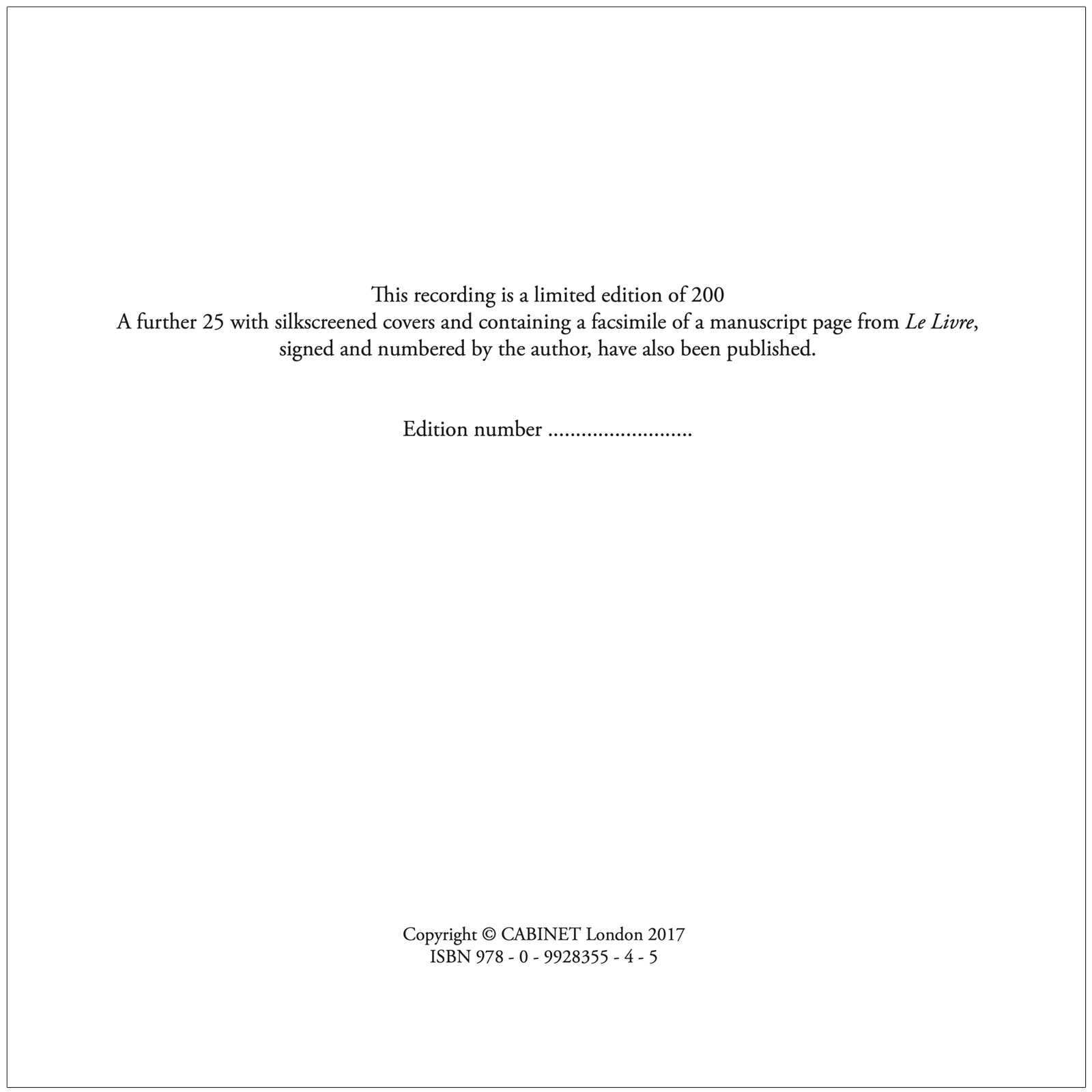
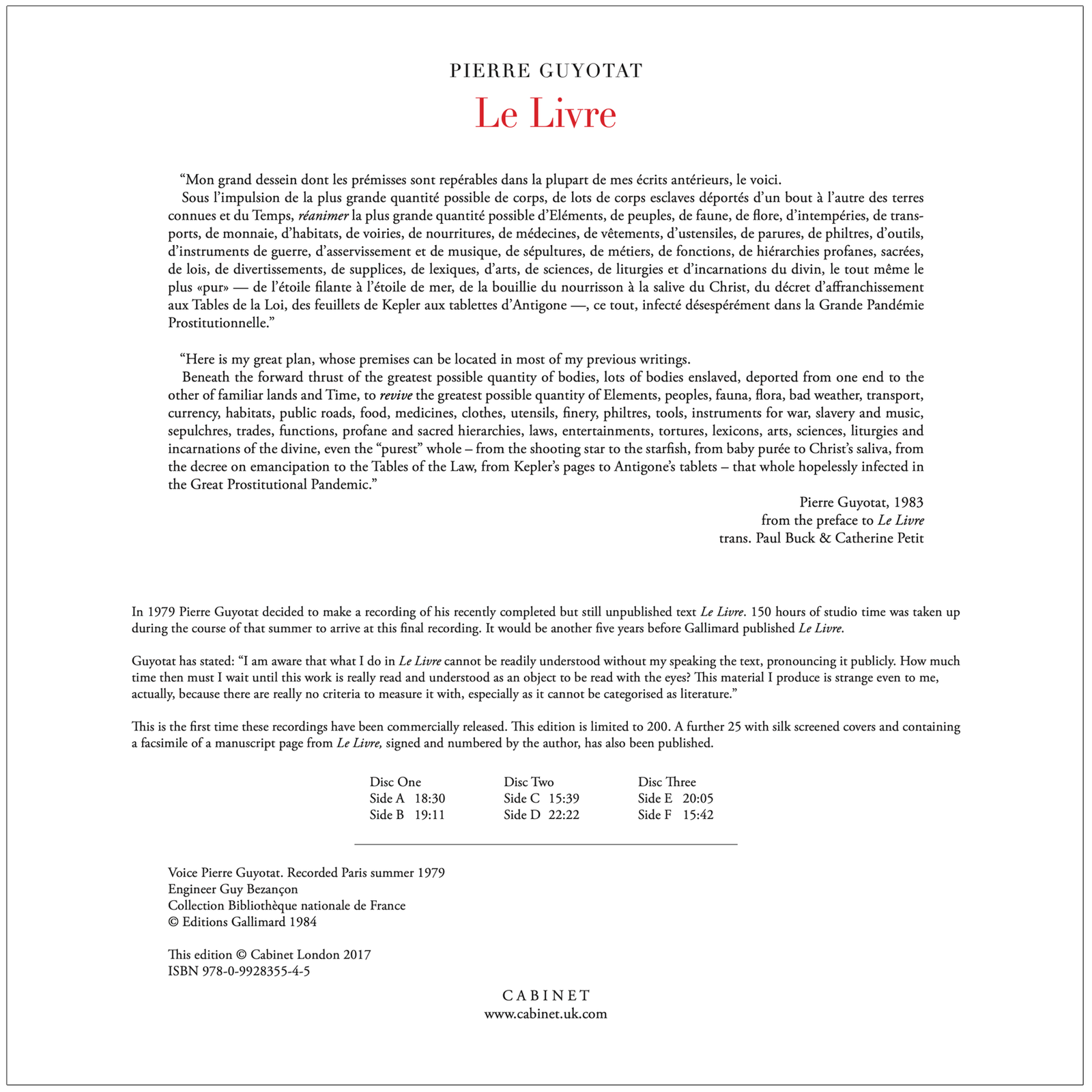 ❮❯
❮❯